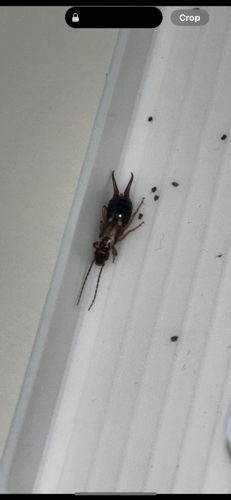Earwig
Scientific Name: Forficula auricularia (Common Earwig) or other Dermaptera species
Order & Family: Order: Dermaptera, Family: Forficulidae (for common earwigs)
Size: Typically 5-25 mm (0.2-1 inch) in length, varying by species.

Natural Habitat
Damp, dark places such as under rocks, logs, leaf litter, mulch, potted plants, and crevices around homes. They are often found outdoors but can enter homes.
Diet & Feeding
Omnivorous. They feed on decaying organic matter, fungi, mold, plants (especially seedlings, soft fruits, and vegetables), and sometimes small insects like aphids or mites.
Behavior Patterns
Nocturnal, hiding during the day and becoming active at night. They are known for the pincer-like cerci at their rear, which are used for defense, catching prey, and folding their wings. Females show maternal care, guarding their eggs and nymphs.
Risks & Benefits
Potential risks: Can be considered a nuisance pest when they enter homes in large numbers. While their pincers can give a minor pinch, they are not venomous and generally harmless to humans. They can damage garden plants. Benefits: Can be beneficial in gardens by preying on some pest insects and helping break down organic matter.
Identified on: 9/11/2025